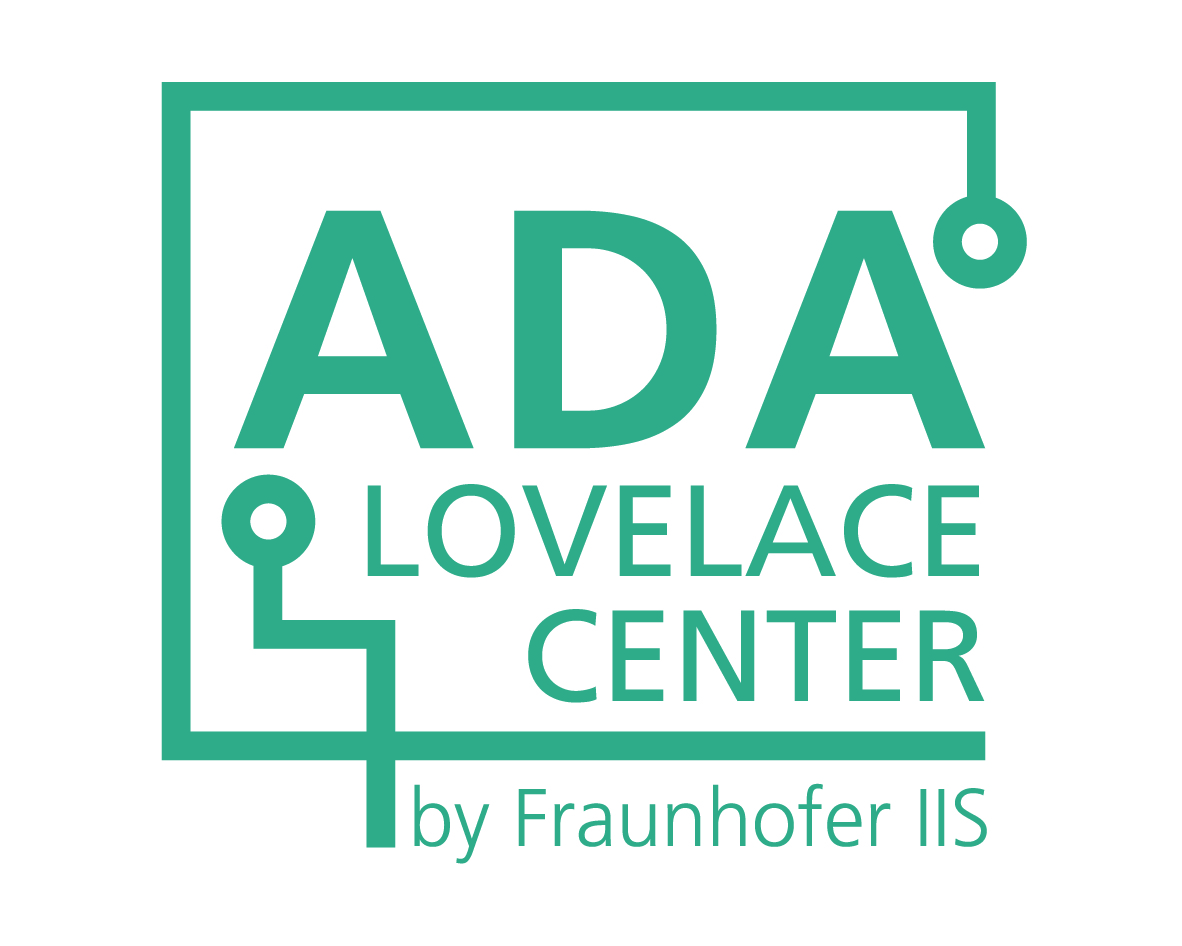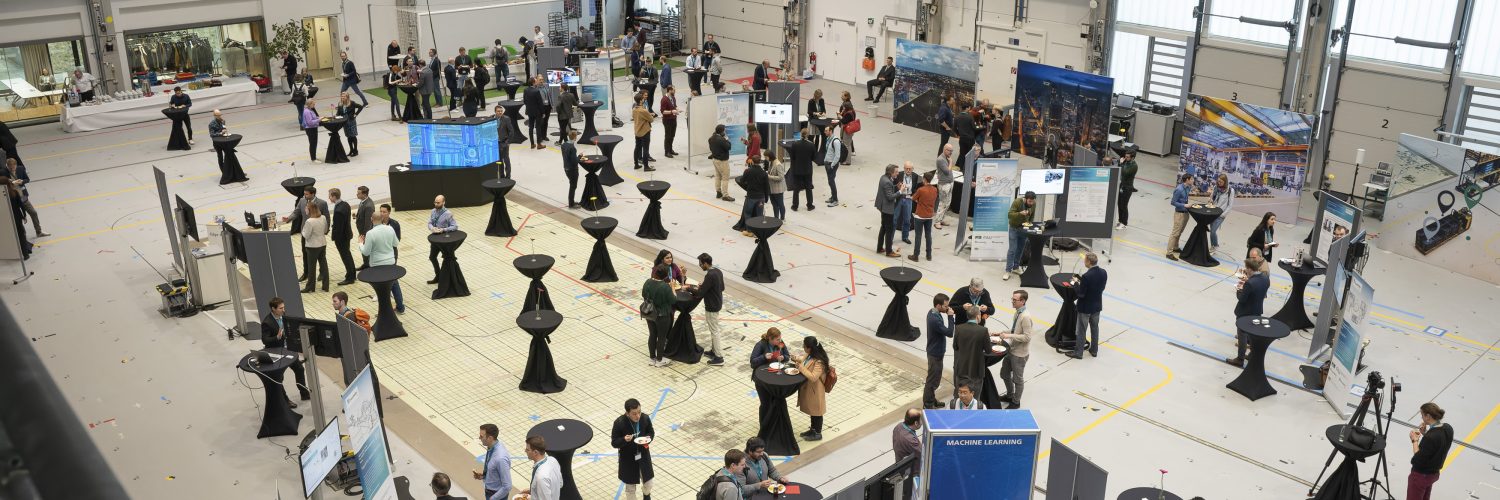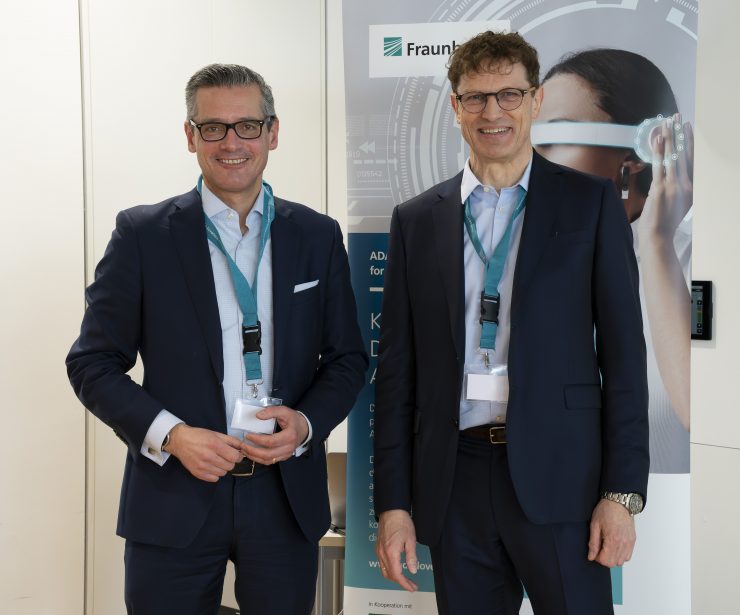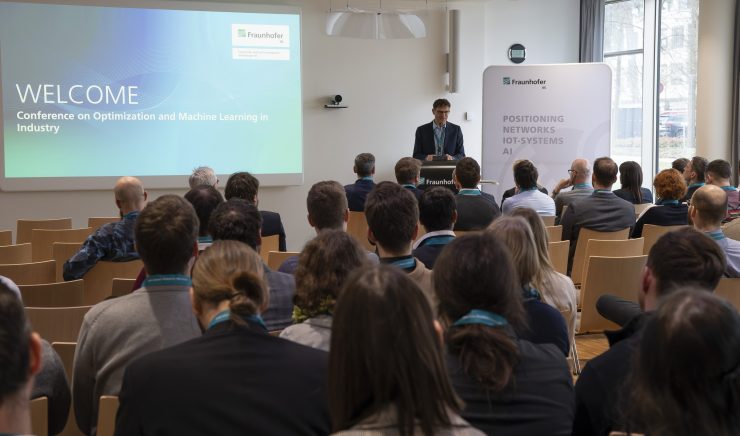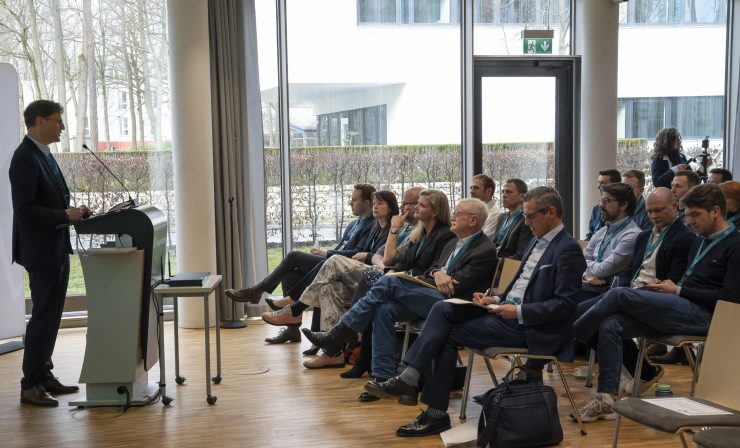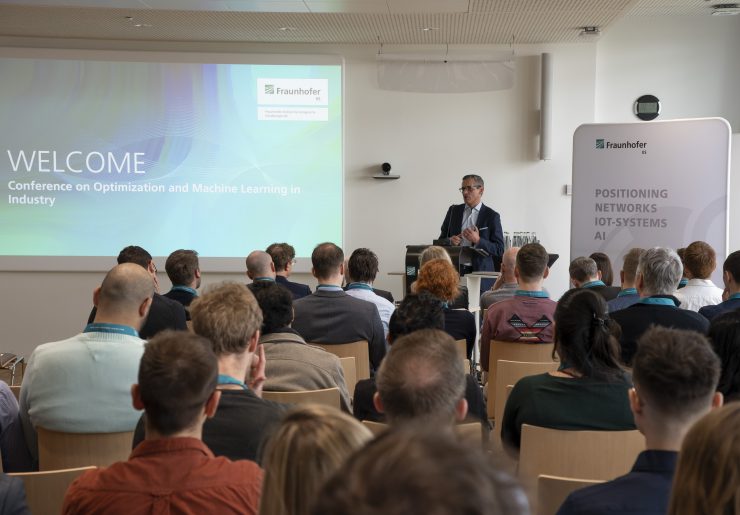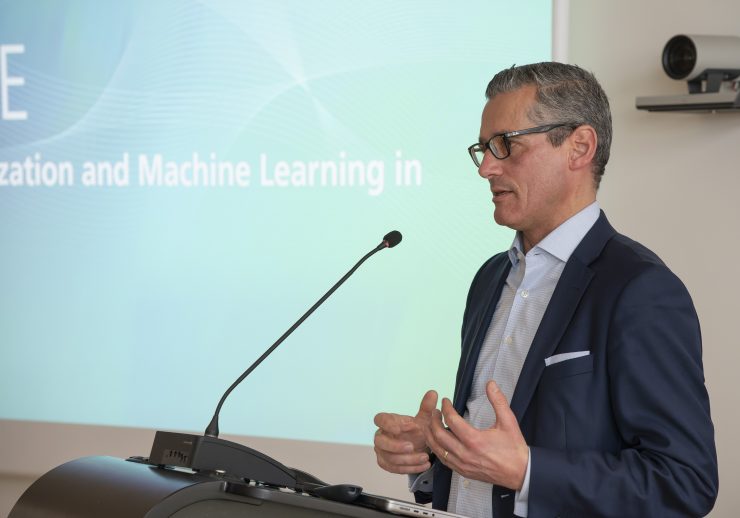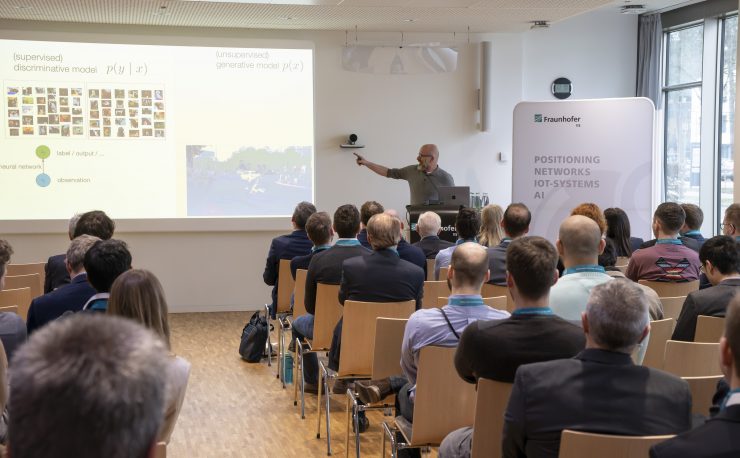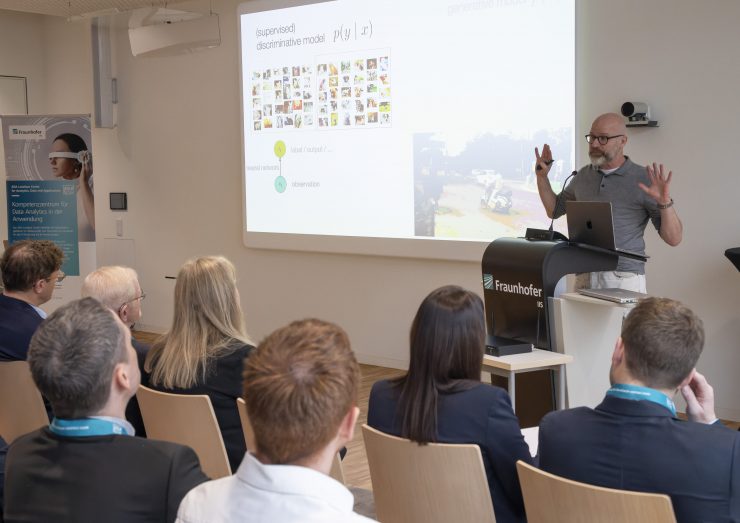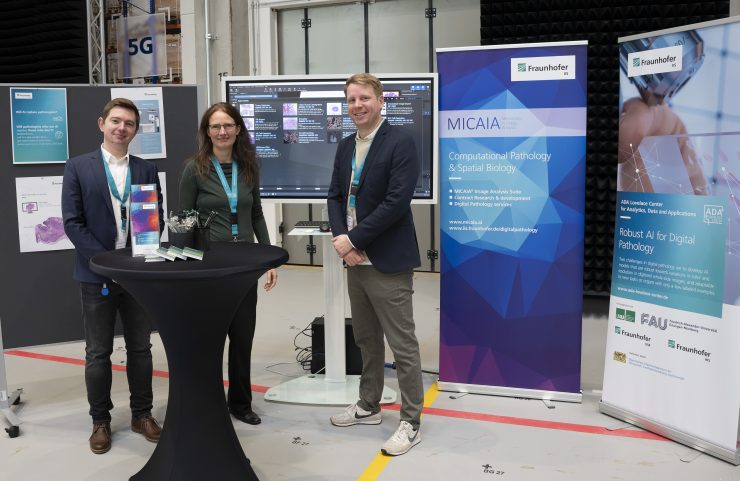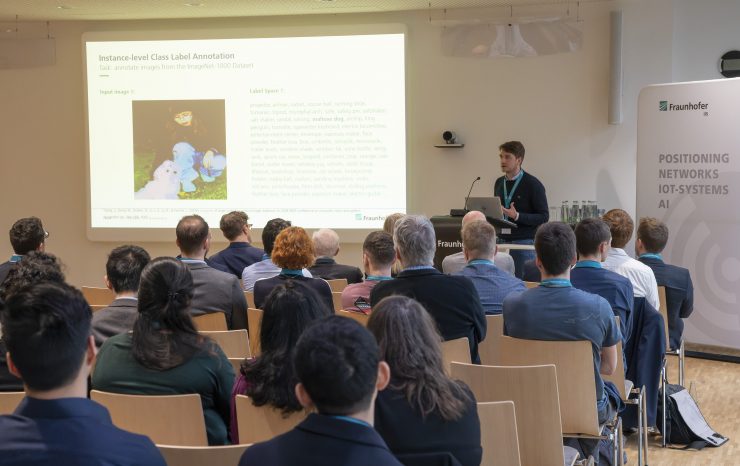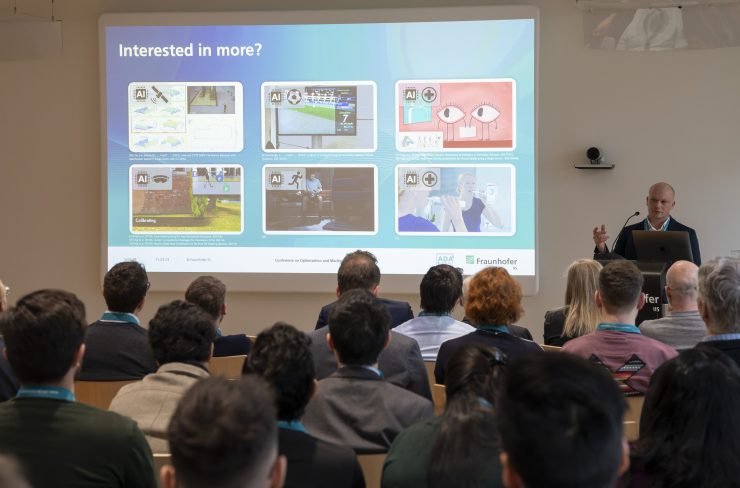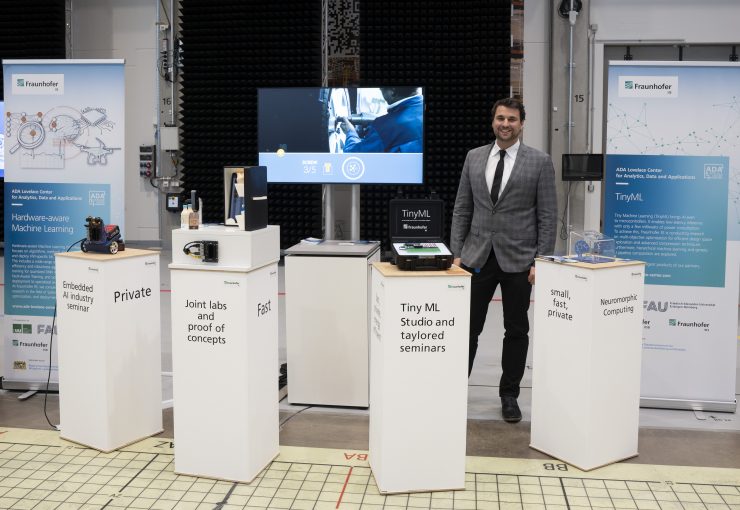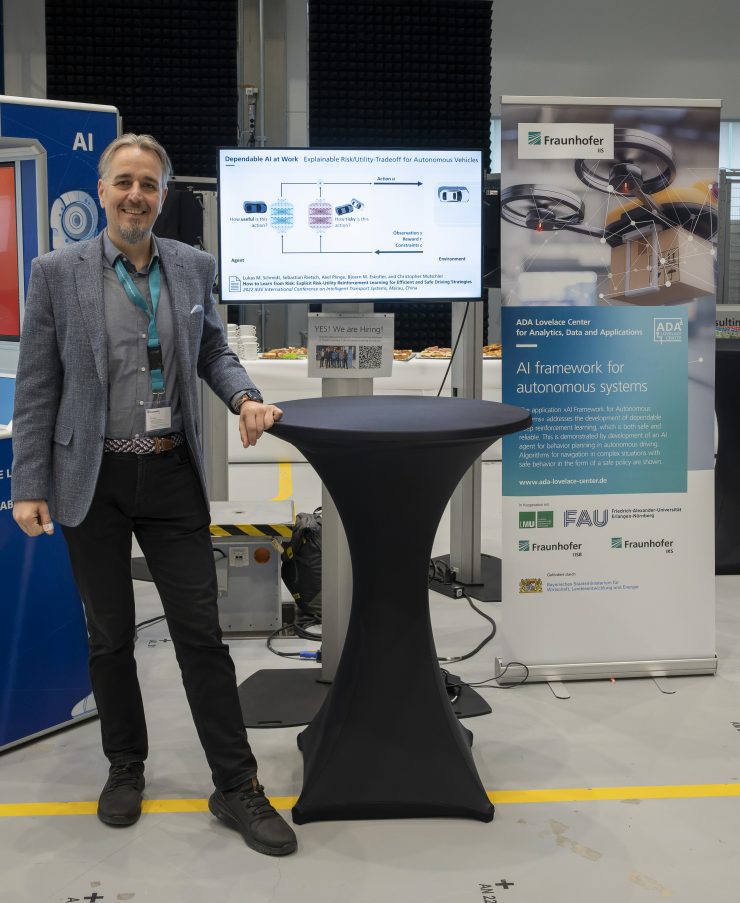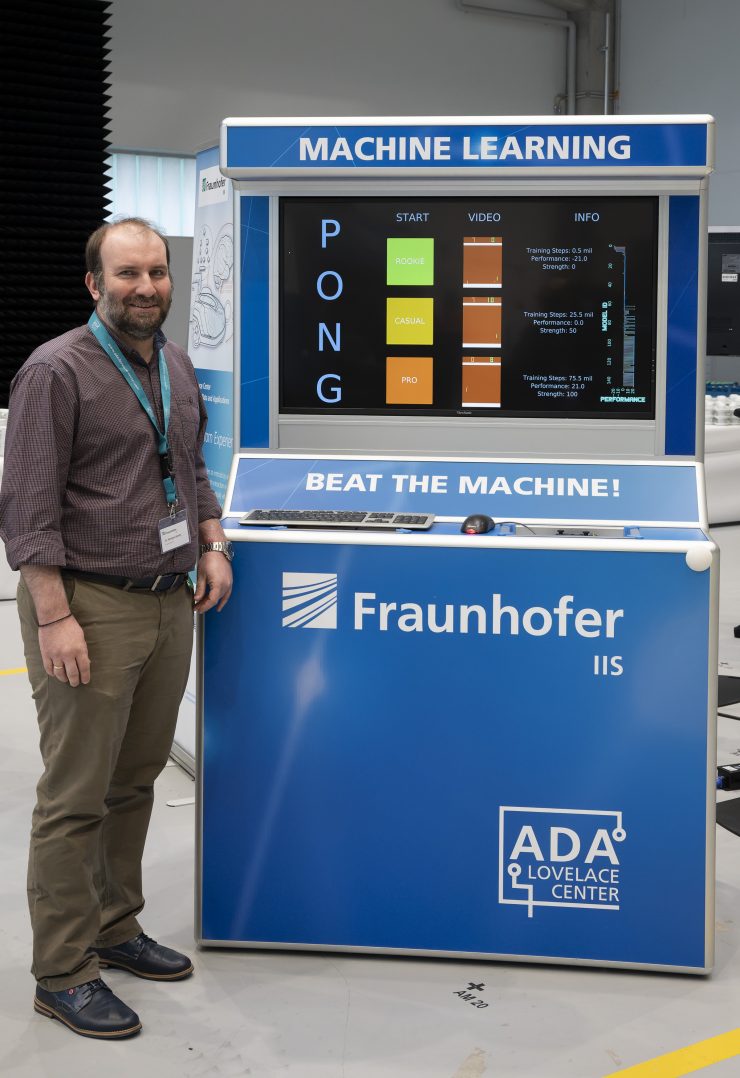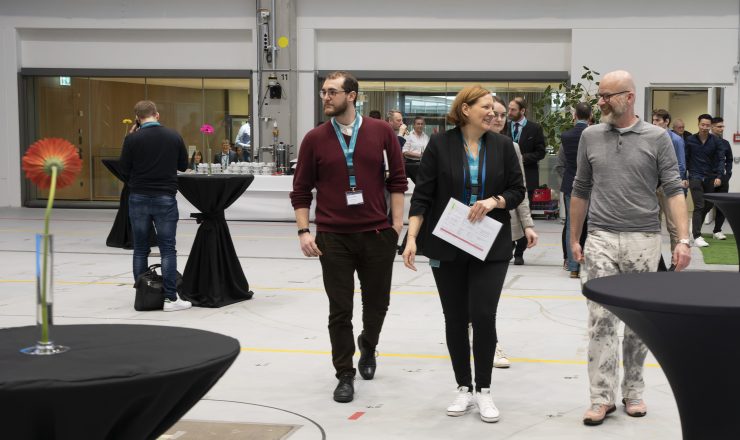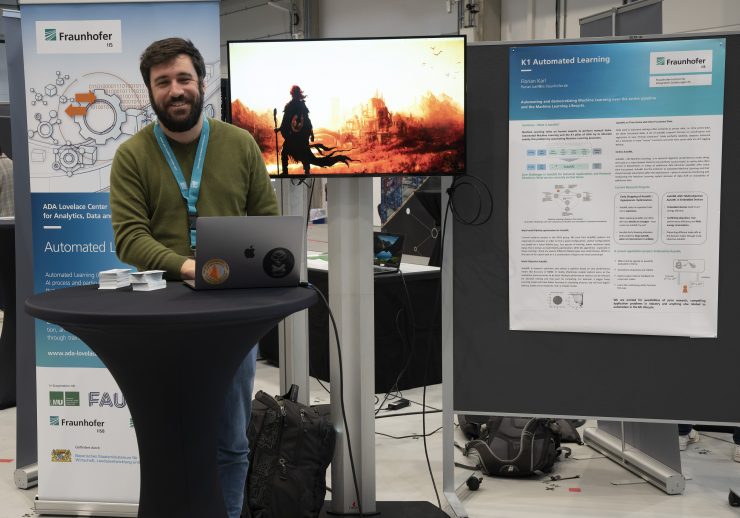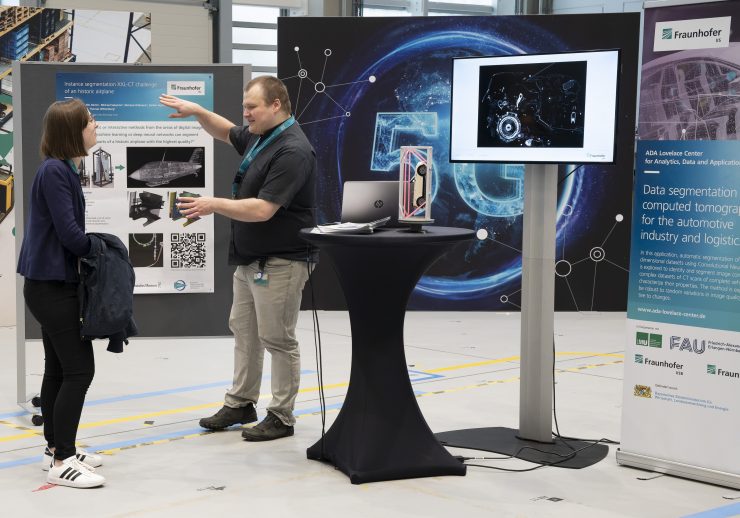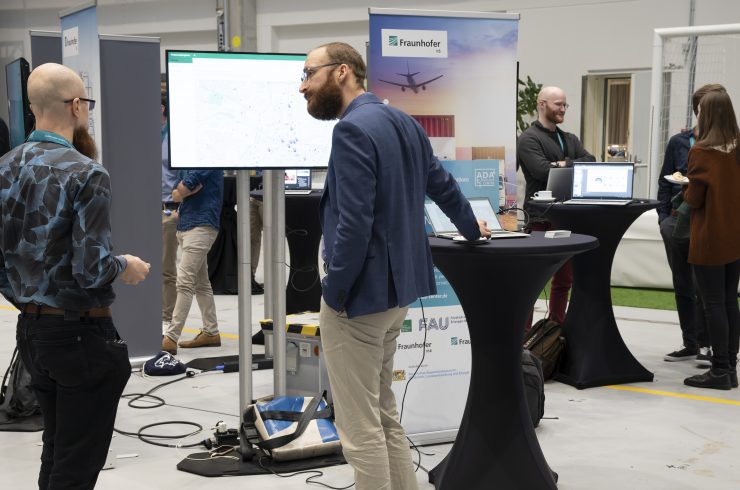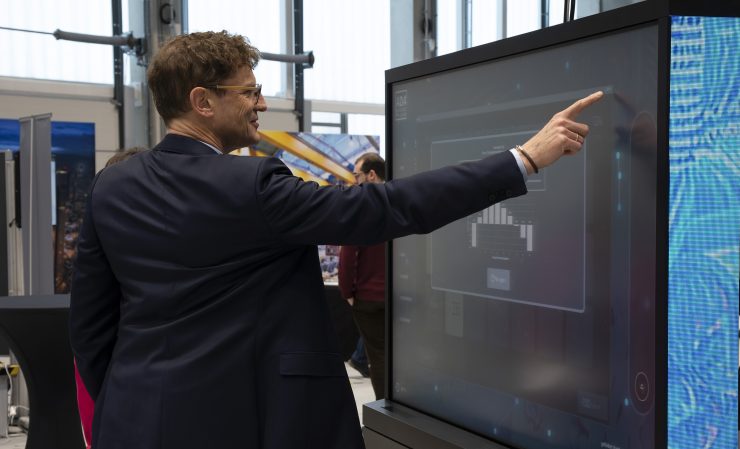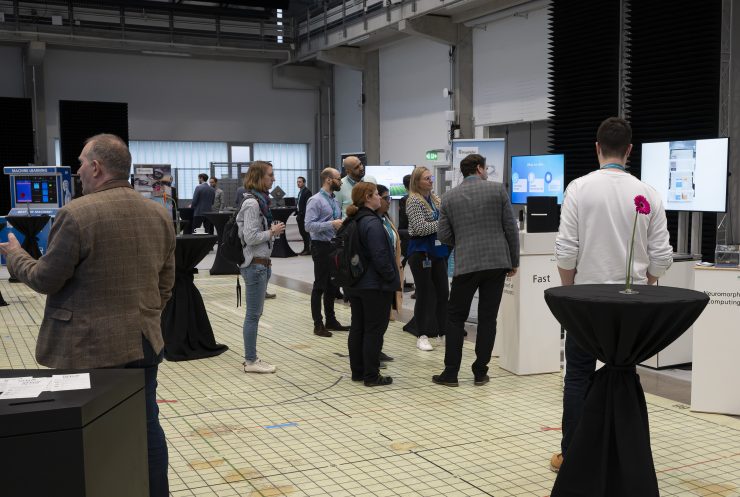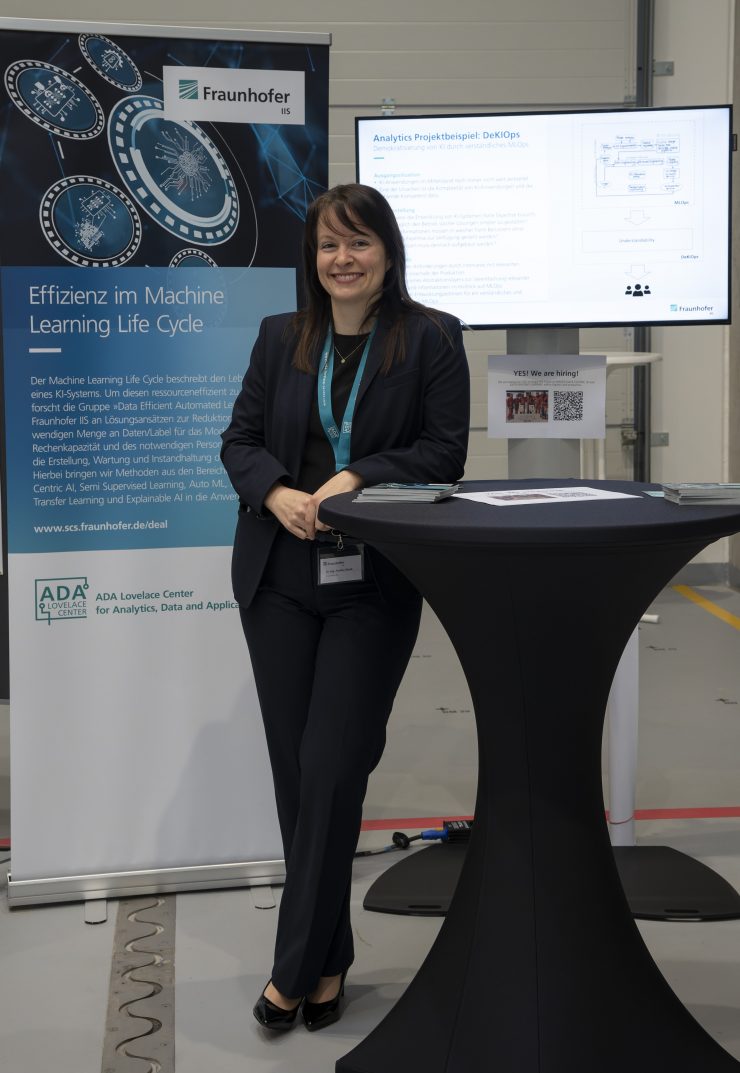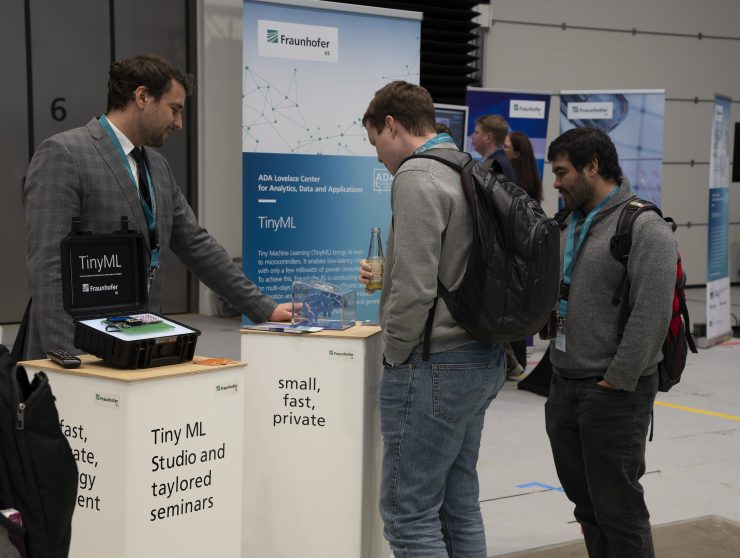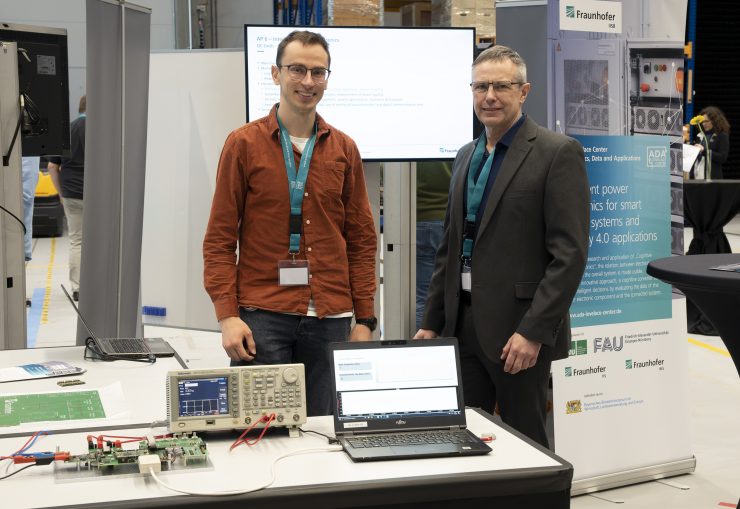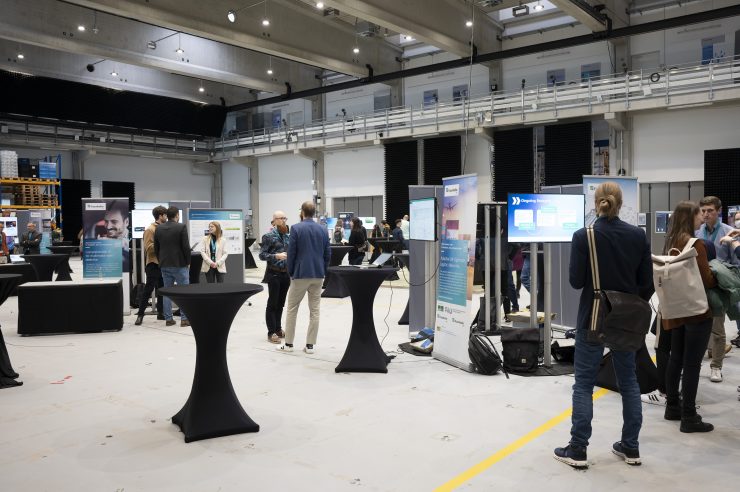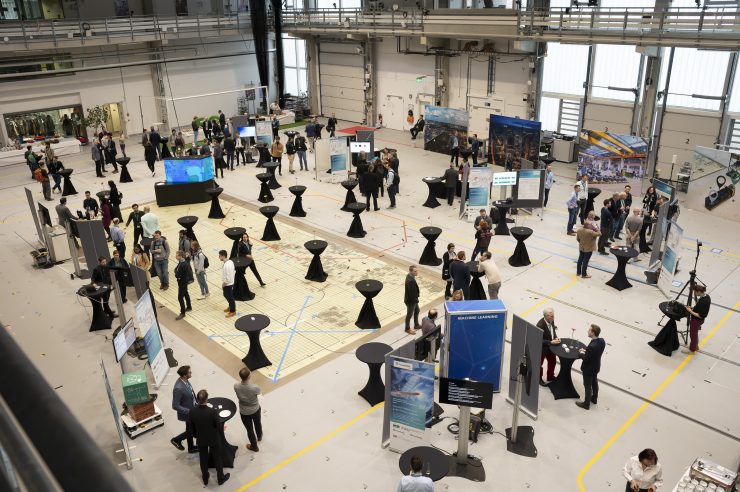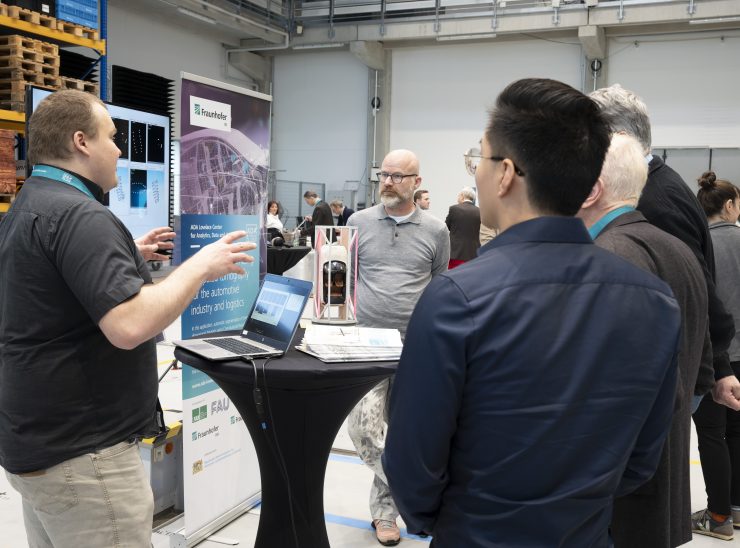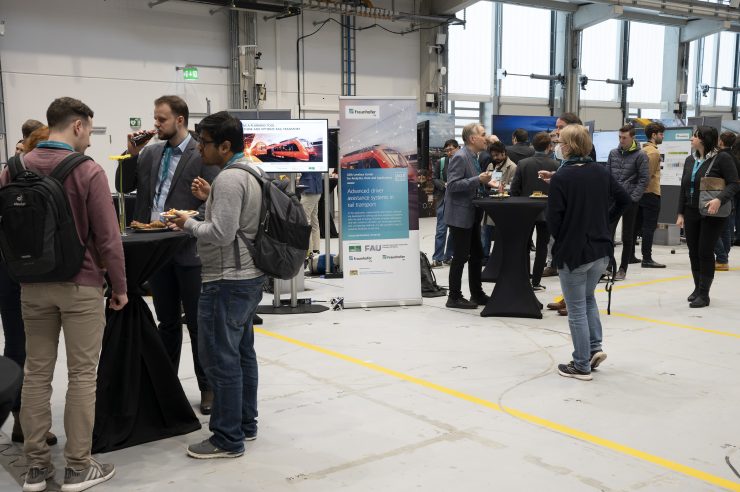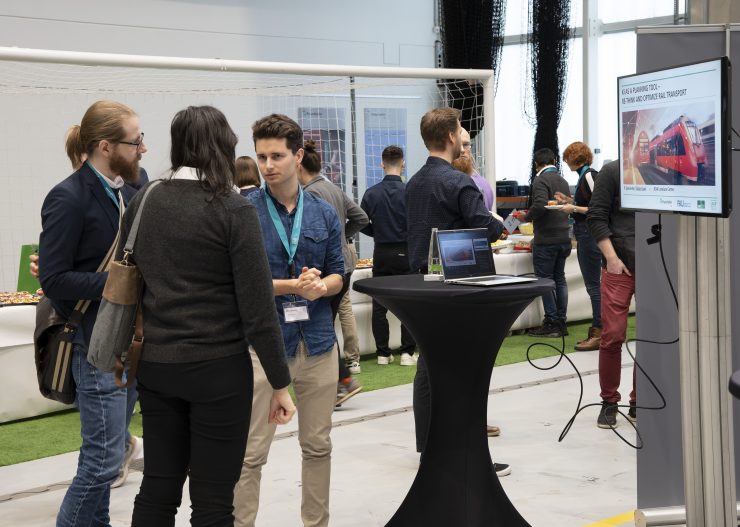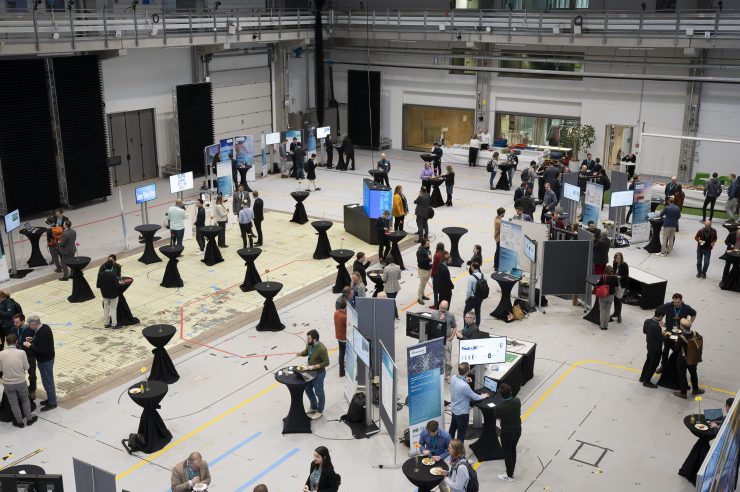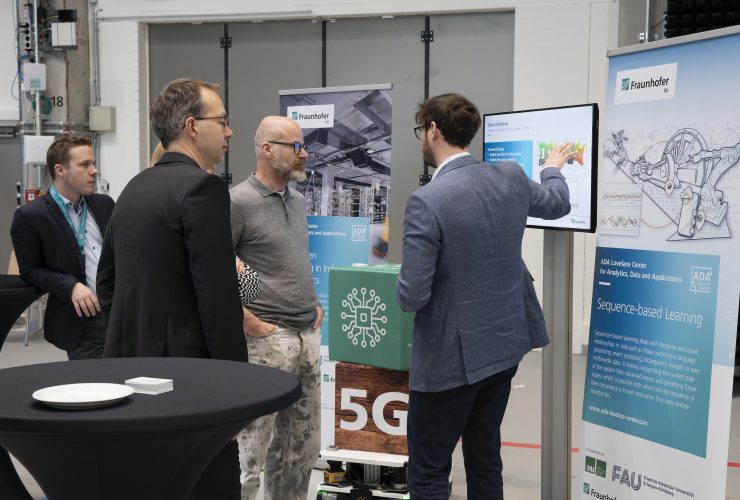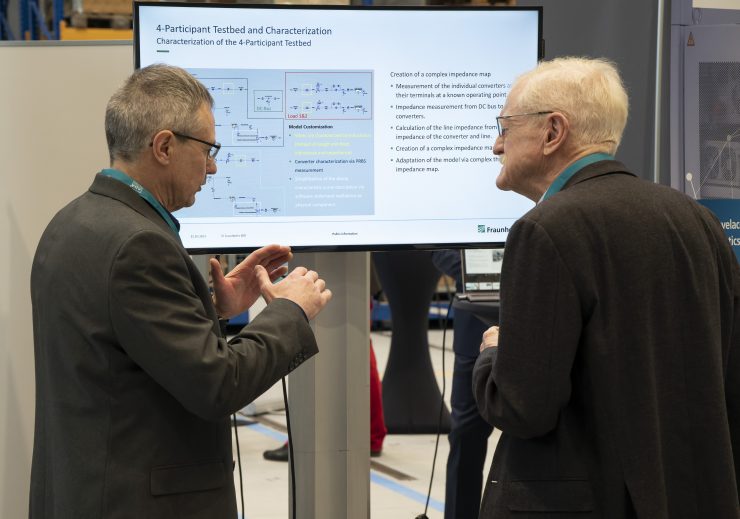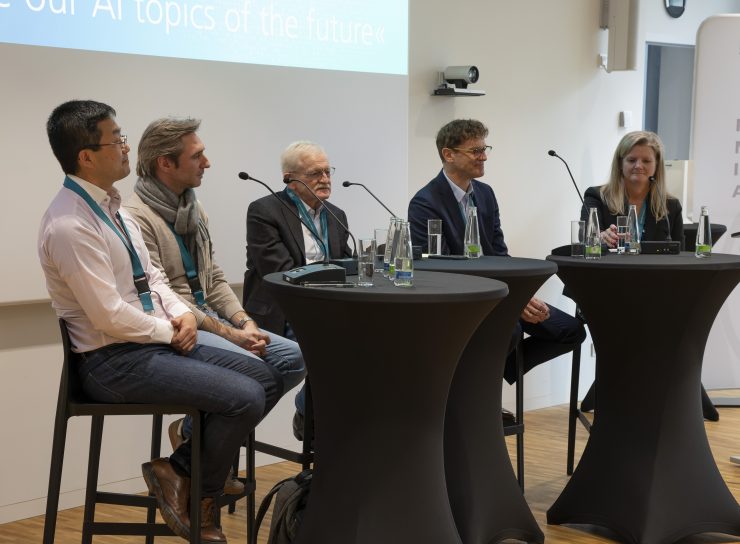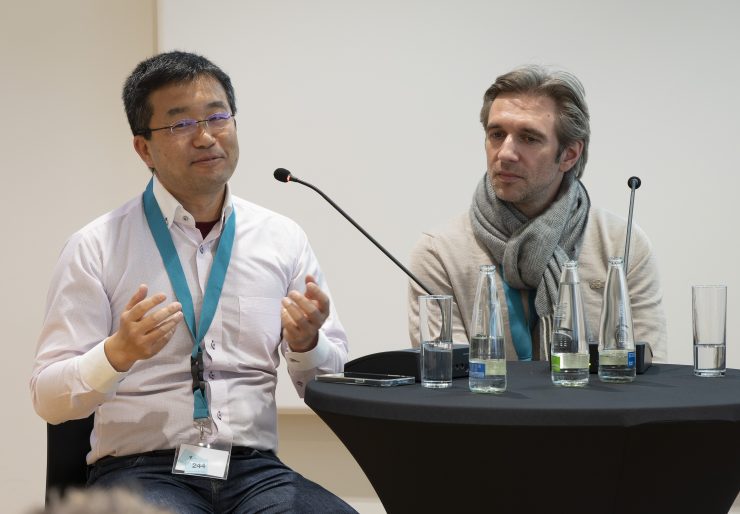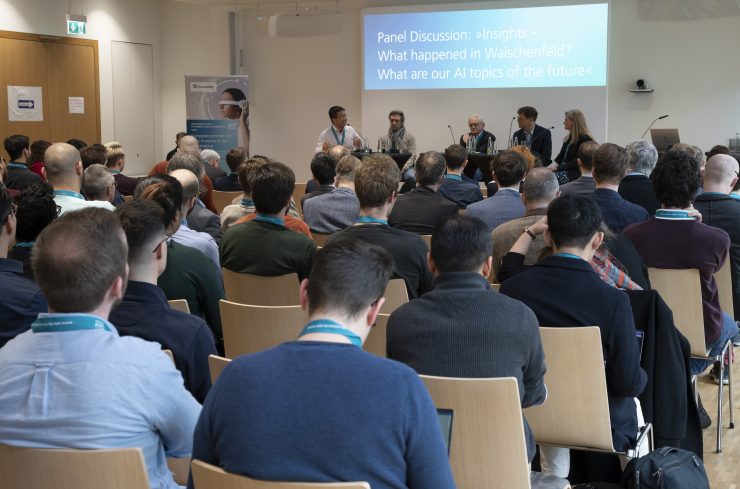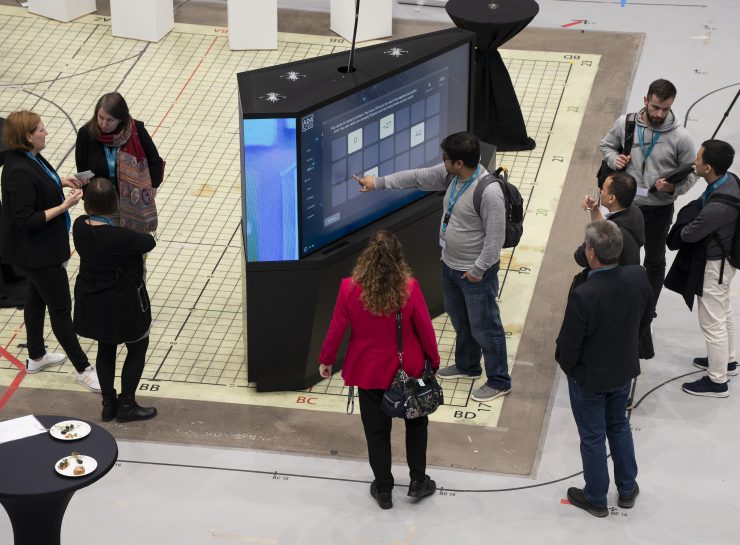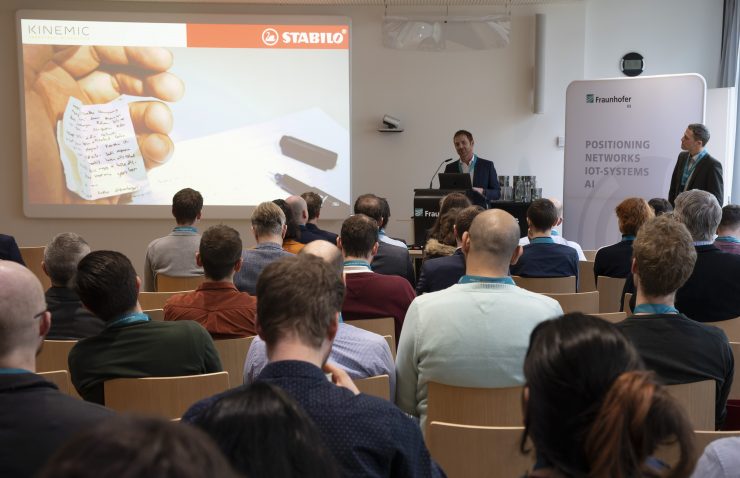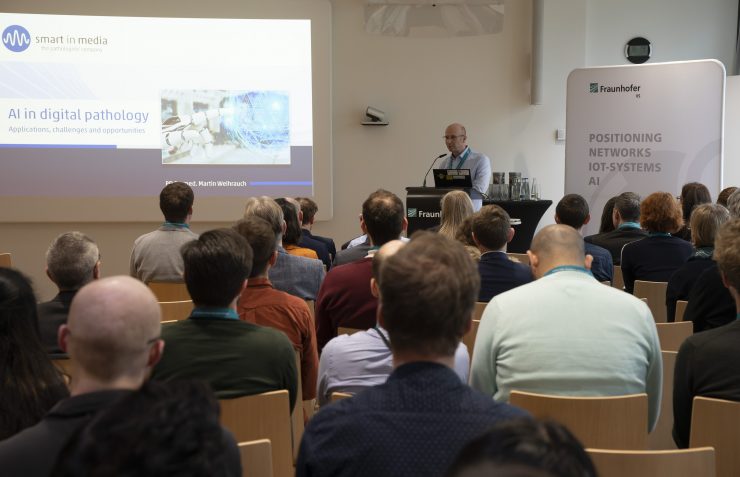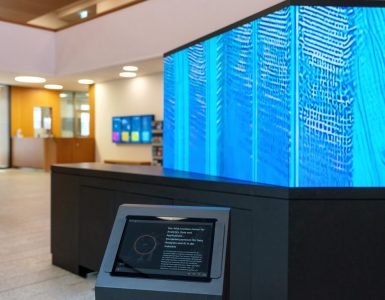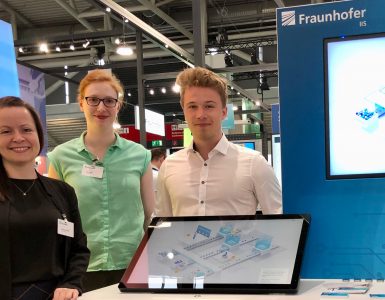Die »Conference on Optimization and Machine Learning in Industry« als krönender Abschluss für den Austausch des internationalen Partnernetzwerks vom ADA Lovelace Center
Es ist schon beeindruckend die neuesten Erkenntnisse im Bereich der mathematischen Optimierung und des Maschinellen Lernens von Wissenschaftlern und Wissenschaftlerinnen aus drei Kontinenten zu hören.
Internationaler Wissenschaftsaustausch in Waischenfeld
Der Workshop on Optimization and Machine Learning machte dies möglich und brachte Experten des RIKEN Center for Advanced Intelligence Project, des Machine Learning Center at the Georgia Institute of Technology und des Zuse Instituts Berlin mit den Expertinnen und Experten des ADA Lovelace Center in Waischenfeld zusammen. Das Programm war reich an wissenschaftlichen Vorträgen und Postersessions zu Themen wie »Control and Machine Learning«, »Efficient standardization of clustering comparison metrics« oder »Combining Active and Semi Supervised Learning to Address Challenges in Real-World Data«.
Ich, Ada Lovelace, wäre gerne dabei gewesen, denn als Wissenschaftlerin und Pionierin auf dem Gebiet der Künstlichen Intelligenz, interessiert mich der aktuelle Stand der KI- Forschung natürlich sehr. Aber nicht nur die Methoden, auch die Anwendungsbereiche von KI sind vielfältig. Hier konnten die Fraunhofer-Forscherinnen und -Forscher ihre Expertise in der angewandten Forschung darstellen, denn das ADA Lovelace Center ist laut Prof. Sebastian Pokutta, Vize Präsident des Zuse Institutes Berlin »einzigartig in seiner Art und Weise, dem Aufbau und wie es betrieben wird: Es gibt die Nähe zur Industrie und gleichzeitige eine starke Anbindung an die Wissenschaft, wo neueste Methoden entwickelt werden«. Das Rahmenprogramm ließ genügend Raum, um den fachlichen Austausch auf einer persönlichen Ebene weiterzuführen und brachte den internationalen Gästen die fränkische Kultur etwas näher.
Conference on Optimization and Machine Learning in Industry in Nürnberg
Anschließend an den Workshop in Waischenfeld fand am 15. März die Conference on Optimization and Machine Learning in Industry statt. Anders als beim Workshop lag hier der Fokus, nicht auf dem rein wissenschaftlichen Austausch, das Ziel der Konferenz war vielmehr, Wissenschaft und Praxis zusammen zu bringen.
Die Konferenz stand allen interessierten Teilnehmerinnen und Teilnehmern aus Industrie sowie dem akademischen Bereich offen und fand im Nürnberger Institutsgebäude des Fraunhofer IIS mit dem Test- und Anwendungszentrum L.I.N.K. statt.
Der Brückenschlag von der Forschung zur Praxis gelang durch fachliche, kompakte Talks einiger Experten aus dem ADA Lovelace Center zu Themen wie »Beyond instance-specific Class Labels – Constrained Clustering for Weakly Supervised Learning«, »AI for Localization in 5G and Beyond: Selected AI-driven Mechanisms to Enable Everyday Positioning und »How to build trust in DL-based perception systems«, sowie einer Podiumsdiskussion führender Wissenschaftler, die die Ergebnisse des Workshops und Aussichten hinsichtlich KI diskutierten und ins Plenum trugen.
Praxisbezogene Vorträge stellen KI in der Anwendung vor
Die Keynote- und Impulssessions der geladenen Referenten aus der Industrie waren eine spannende Ergänzung zur wissenschaftlichen Perspektive. Prof. Dr. Patrick van der Smagt, Head of AI Research bei der VW Group, hielt einen Keynote-Vortrag zum Thema »Predict to control«, Dr. Jens Barth (Head of Software Solutions at STABILO digiVision) und Christoph Amma (CEO kinemic GmbH) nahmen uns auf eine interessante Reise mit und beantworteten die Frage, wie man einen scheinbar gängigen Alltagsgegenstand ins digitale Zeitalter führt und dabei die »bekannte« Anwendung kaum einschränkt.
Dr. Martin Weihrauch (CMO of Smart in Media AG) und Dr. Michaela Benz (Chief Scientist at Fraunhofer IIS) gaben einen Einblick in den Bereich der digitalen Pathologie und die Herausforderungen in der Routinediagnostik und Forschung sowie die Bedeutung künstliche Intelligenz dabei und in der Medizin ganz allgemein.
ADA Lovelace Center stellt sich vor
Das Herzstück der Konferenz bildete die Ausstellung im Test- und Anwendungszentrum L.I.N.K., bei der die Expertinnen und Experten des ADA Lovelace Center die Kompetenzen und Applikationen anhand von Demonstratoren, Filmen oder Präsentationen vorgestellt haben. Mein ganz persönliches Highlight als Ada Lovelace war natürlich meine Spielesammlung: Ein Demonstrator, der übersichtlich die gesamten Projektinhalte darstellt und zum Entdecken und eben auch spielen einlädt. So konnten die Teilnehmenden untereinander und auch mit den Fraunhofer-Forschenden in den Austausch kommen und die aktuellen Themen, Herausforderungen und Erkenntnisse im Bereich KI diskutieren.
Ich bin mir sicher, dass nicht nur ich, sondern auch die ca. 150 Teilnehmenden aus Wissenschaft und Wirtschaft die Konferenz als ein gelungenes Event beschreiben würden. Außerdem freue ich mich darauf zu verfolgen, welche Auswirkungen dieser gewinnbringende Austausch auf die weitere Arbeit im ADA Lovelace Center haben wird.
Rich AI exchange between science and industry
The „Conference on Optimization and Machine Learning in Industry“ as the crowning event for the exchange of the international partner network of the ADA Lovelace Center
It is impressive to hear the latest findings in the field of mathematical optimization and machine learning from scientists from three continents.
International scientific exchange in Waischenfeld
The Workshop on Optimization and Machine Learning made this possible and brought together experts from the RIKEN Center for Advanced Intelligence Project, the Machine Learning Center at the Georgia Institute of Technology and the Zuse Institute Berlin with experts from the ADA Lovelace Center in Waischenfeld. The program was rich in scientific talks and poster sessions on topics such as „Control and Machine Learning“,Efficient standardization of clustering comparison metrics“ or „Combining Active and Semi Supervised Learning to Address Challenges in Real-World Data“.
I, Ada Lovelace, would have liked to be there, because as a scientist and pioneer in the field of artificial intelligence, I am naturally very interested in the current state of AI research. But not only the methods, also the application areas of AI are diverse. Here, Fraunhofer researchers were able to showcase their expertise in applied research because, according to Prof. Sebastian Pokutta, Vice President of the Zuse Institute Berlin, the ADA Lovelace Center is „unique in the way it is set up and how it is run: There is proximity to industry and at the same time a strong connection to academia, where the latest methods are developed.“ The social program left enough room to continue the professional exchange on a personal level and brought the international guests a little closer to the Franconian culture.
Conference on Optimization and Machine Learning in Industry in Nuremberg
After the workshop in Waischenfeld, the Conference on Optimization and Machine Learning in Industry took place on March 15. In contrast to the workshop, the focus here was not on purely scientific exchange, but rather on bringing together science and practice.
The conference was open to all interested participants from industry and academia and took place in the Nuremberg institute building of Fraunhofer IIS with the Test and Application Center L.I.N.K.
Bridging the gap between research and practice, the workshop featured technical, compact talks by a number of experts from the ADA Lovelace Center on topics such as „Beyond instance-specific Class Labels – Constrained Clustering for Weakly Supervised Learning“, „AI for Localization in 5G and Beyond: Selected AI-driven Mechanisms to Enable Everyday Positioning and „How to build trust in DL-based perception systems“, as well as a panel discussion by leading scientists who discussed the results of the workshop and prospects regarding AI and took them to the plenary.
Practice-based presentations show AI in action
The keynote and impulse sessions by invited speakers from industry were an exciting addition to the scientific perspective. Prof. Dr. Patrick van der Smagt, Head of AI Research at VW Group, gave a keynote talk on „Predict to control“, Dr. Jens Barth (Head of Software Solutions at STABILO digiVision) and Christoph Amma (CEO kinemic GmbH) took us on an interesting journey and answered the question of how to bring a seemingly common everyday object into the digital age while hardly limiting its „known“ application.
Dr. Martin Weihrauch (CMO of Smart in Media AG) and Dr. Michaela Benz (Chief Scientist at Fraunhofer IIS) gave an insight into the field of Digital Pathology and the challenges in routine diagnostics and research as well as the importance of artificial intelligence in this and in medicine in general.
ADA Lovelace Center presents itself
The heart of the conference was the exhibition in the L.I.N.K. Test and Application Center, where the experts of the ADA Lovelace Center presented the competences and applications by means of demonstrators, films or presentations. My personal highlight as Ada Lovelace was, of course, my game collection: a demonstrator that presents the entire project content and invites people to discover and play. This allowed the participants to exchange ideas among themselves and also with the Fraunhofer researchers and to discuss the current topics, challenges and findings in the field of AI.
I am sure that not only I, but also the approximately 150 participants from science and industry would describe the conference as a successful event. I also look forward to following what impact this profitable exchange will have on the further work at the ADA Lovelace Center.

